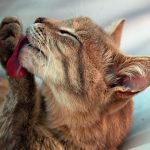When it comes to choosing the right food for your feline companion, the options can be overwhelming. As a dedicated pet owner, you’ve likely come across the term “human-grade” in your search. But what exactly does it mean, and is it the best choice for your cat? In simple terms, human-grade cat food meets the same quality standards as food fit for human consumption.
Before introducing any new food to your cat, regardless of its quality, it’s crucial to ensure it meets the nutritional standards set by the Association of American Feed Control Officials (AAFCO), either through meeting established nutrient levels or via rigorous animal feeding tests. Consulting with your veterinarian before making a switch is also highly recommended.
Understanding Quality Standards
The United States Department of Agriculture (USDA) and the Food and Drug Administration (FDA) are the regulatory bodies overseeing what is deemed safe for human consumption. They work alongside the Association of American Feed Control Officials (AAFCO) to establish the necessary guidelines and accurate labeling for pet food products.
Despite their century-long existence, the AAFCO only recently defined feed-grade and human-grade foods. This development took place between late 2015 and August 2021. In essence, the USDA determines which ingredients or products are suitable for human consumption, and the AAFCO recognizes human-grade as being on par with human-edible.
While the FDA doesn’t explicitly define “feed-grade,” their responsibility lies in ensuring the safety, proper manufacture, and adequate labeling of both human and animal food. However, it’s important to note that the FDA doesn’t mandate pre-market review for pet food, making it challenging to determine quality.
Human-Grade Ingredients: A Game Changer
Human-grade cat food begins with the use of ingredients fit for human consumption. This means you won’t find vague terms like “by-products” or “meal” on the ingredient list. These terms often conceal low-quality components and are commonly used to maintain protein levels at the expense of quality.
In contrast, human-grade cat food proudly lists specific ingredients like chicken hearts, turkey thighs, or beef liver, providing transparency about what your cat is consuming.
The Assurance of Human-Grade Manufacturing
Choosing human-grade cat food not only guarantees high-quality ingredients but also ensures a safe manufacturing process. For a company to label its products as human-grade, it must adhere to two key criteria: all ingredients must be safe for human consumption, and the entire production process, from preparation to storage and transportation, must meet legal standards for human food.
Unlike standard pet food, where pre-market review isn’t mandatory, human-grade cat food undergoes rigorous oversight. The FDA regulates non-meat processed food, while the USDA oversees the meat industry, scrutinizing every step from slaughter to packaging.
Smalls: Pioneering Human-Grade Cat Food
Reflecting on a century of pet food evolution, it’s clear how domestic cats have transitioned from their wild, hunting roots to primarily subsisting on kibble and occasional canned food.
Kibble emerged as a practical solution during WWII’s meat and tin rationing, but even after restrictions were lifted, the pet food industry favored it for its cost-effectiveness, not its suitability for pets’ health. Smalls, founded by Matt Michaelson and Calvin Bohn in 2017, emerged as a response to the industry’s history. They set out to create cat food using locally-sourced ingredients in their own kitchens, ultimately leading to the development of Smalls Human-Grade Fresh.
From humble beginnings, Smalls has grown, maintaining its commitment to high-quality human-grade standards.
Choosing the Best Human-Grade Cat Food: Expert Tips
- Read Labels Thoroughly: Pay close attention to how a cat food label is worded. Phrases like “made with human-grade ingredients” may indicate that only a small percentage of the named ingredient is included. True human-grade food will contain only ingredients safe for human consumption.
- Evaluate Ingredient Quality and Quantity: Look for identifiable meat sources as the first and second ingredients. Additionally, assess the Guaranteed Analysis (GA) values for protein, fat, fiber, and moisture content. Consider calculating the Dry Matter Basis (DMB) for a more accurate nutrient comparison.
- Prioritize Protein: Cats, as obligate carnivores, require a protein-rich diet with limited carbohydrates. Opt for a cat food with over 50% dry matter protein and less than 20% dry matter carbohydrates for optimal feline health.
In summary, choosing human-grade cat food ensures that your feline friend receives the highest quality ingredients prepared with the same care as food for humans. This not only meets their nutritional needs but also provides you with peace of mind knowing you’re offering them the best.



